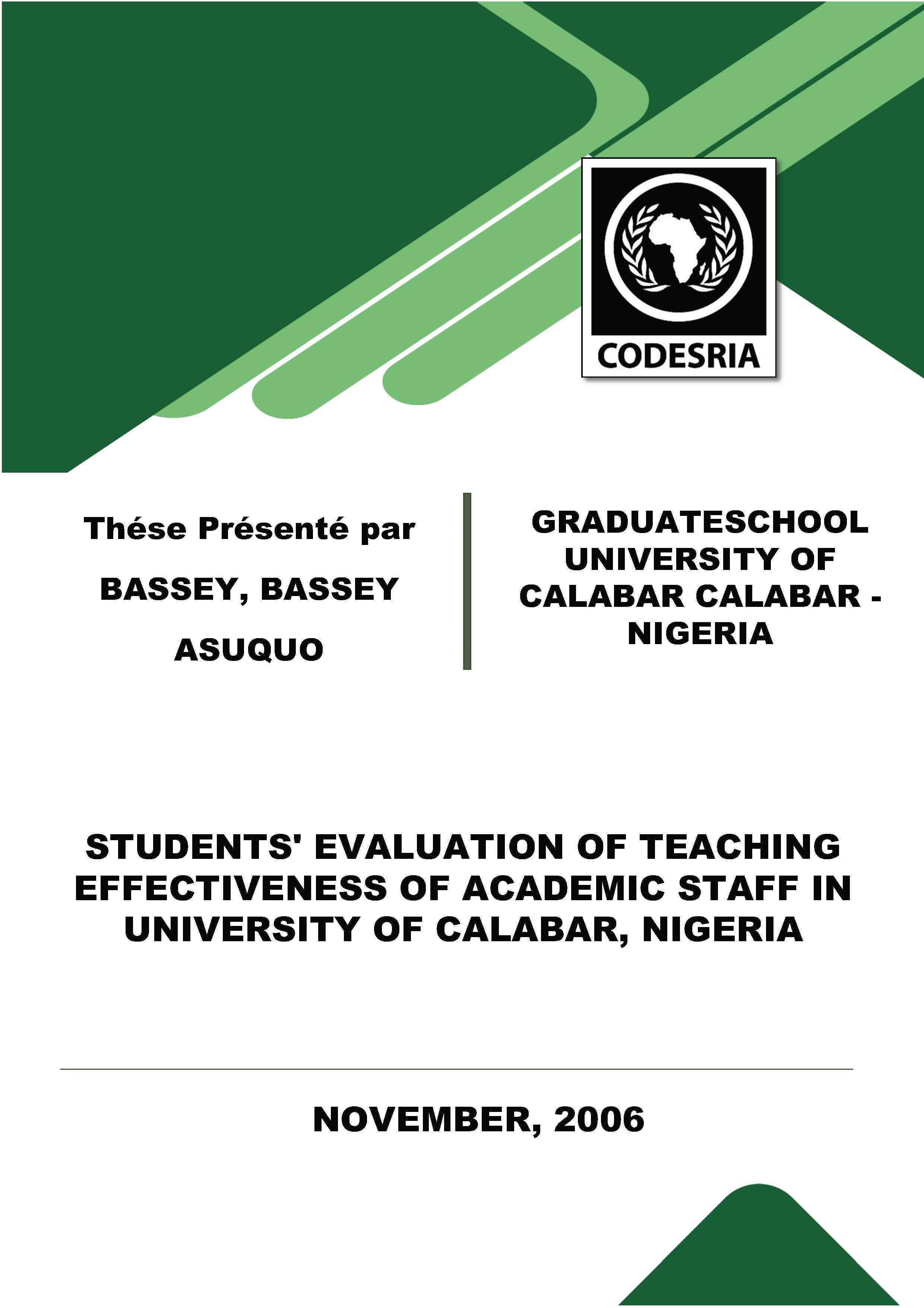Students' Evaluation of Teaching Effectiveness of Academic Staff in University of Calabar, Nigeria
Keywords:
Teaching personnel, evaluation, students, quality of education, qualifications, educational output, academic staff evaluation, Calabar, NigeriaSynopsis
This study sought to ascertain, usmg students views, the extent of the teaching effectiveness of academic staff, faculty-by-faculty, m University of Calabar, Nigeria; and how gender, age, discipline, academic qualification, rank and teaching experience of academic staff influenced their teaching effectiveness. Nine null hypotheses and one research question were formulated to guide the study. The study adopted the ex post facto design using the stratified random sampling technique in selecting the 380 academic staff and 3800 undergraduate students for the study. The instruments used for collecting data were a 7-item Academic Staff Questionnaire (ASQ) and a 43-item University Students' Evaluation of Teaching Effectiveness Questionnaire (USETEQ). Population t-test, i dependent t-test, dependent t-test, one way ANOVA, and three-way ANOV A were used to test hypotheses at . 05 alpha leveL The following, among others, were the findings of the study: (i) The teaching effectiveness of academic staff is significantly high. (ii) Academic staff in Faculties of Law and Education were assessed by students to be most effective while those in Faculties of Agriculture and Management Sciences were assessed least in teaching effectiveness. (iii) Gender of the academic staff was not a significant factor in their teaching effectiveness. (iv) Age, academic qualification, discipline, rank, and teaching experience, taken individually, were significant factors in academic staff's teaching effectiveness. It was concluded that if quality/standard of.learning among students/graduates of the University were low, something other than effective teaching might be responsible. Recommendation: academic staff should explore the use of student evaluation of instruction to foster their professional growth.
Downloads
References
Abrami, P. C,. Leventhal, L., & Perry, R. P. (1992). Educational seduction. Review of Educational Research, 52(3). 446-464.
Aderounmu, W. 0., & Ehiametalor, E. T. (1985). Introduction to administration of schools in Nigeria. Ibadan: Evans Brothers.
Adeyemo, P. 0. (1994). Principles and practice of education. Ado Ekiti: Omolayo Standard Press.
Adu, E. O·. (2004). The effect of teacher preparation and professional development on studies' academic achievement. In O. A. Afemikhe and J. G; Adewale (Eds), Issues in educational measurement and evaluation in Nigeria, ('pjJ. 46-53). Ibadan: Ibadan University Press.
Agbi, A. I. (2004). Teacher -stud(;!nt communication in STM classroom: problems and prospects. Journal of Educational Innovators, 1(1), 51-57.
Aleamoni, L. M. (1976). Typical faculty concerns about student evaluation of instruction. National Association of Colleges and Teachers of Agriculture Journal. 20(1), 16-21.
Aleamoni, L. M. (1980). Student ratings of instruction. In J. Millman (Ed), Handbook of teacher evaluation (pp. 43-48). Beverly Hills, California: Sage Publications.
Aleamoni, L. M. (1987). Typical faculty concerns evaluation of teaching. In L. M. Aleamoni (Ed), evaluation and improving instruction (pp. Francisco: Jossey-Bass.
about student Techniques for 25-31). San Aleamoni, L. M., & Yimer, M. (1973). An investigation of the relationship between colleague rating, student rating, research productivity, and academic rank in rating instructional
effectiveness. Journal of Educational Psychology, 64, 274-277.
Aleamoni, L. M., & Graham, M. H. (1974). The relationship between CEQ ratings and instructor's- work, class size and. course level. Journal of Educational Measurement, ll, 189-202.






